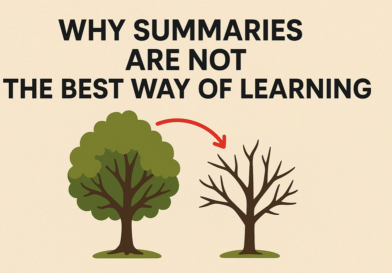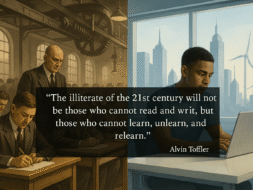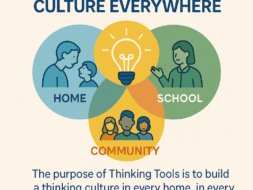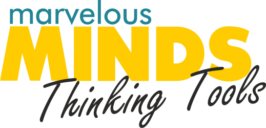Most learners make summaries.
They condense chapters, trim notes, and rewrite in “shorter” form.
They believe this makes learning easier.
But when the exam comes, it all falls apart.
❓ “I knew the work, but I couldn’t answer the questions.”
❓ “It looked familiar, but I didn’t know what to do.”
❓ “I studied for hours, but still failed.”
The problem isn’t their effort.
It’s that summaries train the brain to do the opposite of what exams demand.
What Do Summaries Actually Do?
Summaries aim to reduce content:
- They cut detail.
- They shrink focus.
- They compress complexity into fragments.
The hidden assumption is that smaller equals easier.
But the human brain is not wired to make less.
The Brain Is an Expander, Not a Reducer
The brain is not a filing cabinet.
It is a pattern-builder, meaning-maker, and relationship engine.
It’s wired to:
- Expand connections
- Build patterns
- Ask “why” and “how”
- Link experiences, images, and ideas
Give the brain a single word—like leaf.
Instantly it expands:
🍃 Leaf → tree → seasons → autumn → chlorophyll → photosynthesis → backyard memories
So when learners force content into smaller and smaller summaries, they fight against the brain’s natural expansion.
Why Summaries Collapse in Exams
Exams demand expansion:
- Apply
- Analyse
- Explain
- Transfer knowledge
- Rebuild understanding in new forms
But the brain, trained by summaries, has been practicing compression instead.
So when the exam calls for expansion, the brain freezes.
Under exam stress, the executive function takes charge—working memory, decision-making, problem-solving. But if memory has only been stocked with compressed, shallow summaries, it cannot deliver the structure needed.
The result? Cognitive fibrillation—like a heart out of rhythm. Mental energy scatters. Learners panic, not because they didn’t try, but because they were trained to shrink knowledge, not build it.
This is the cognitive train smash.







